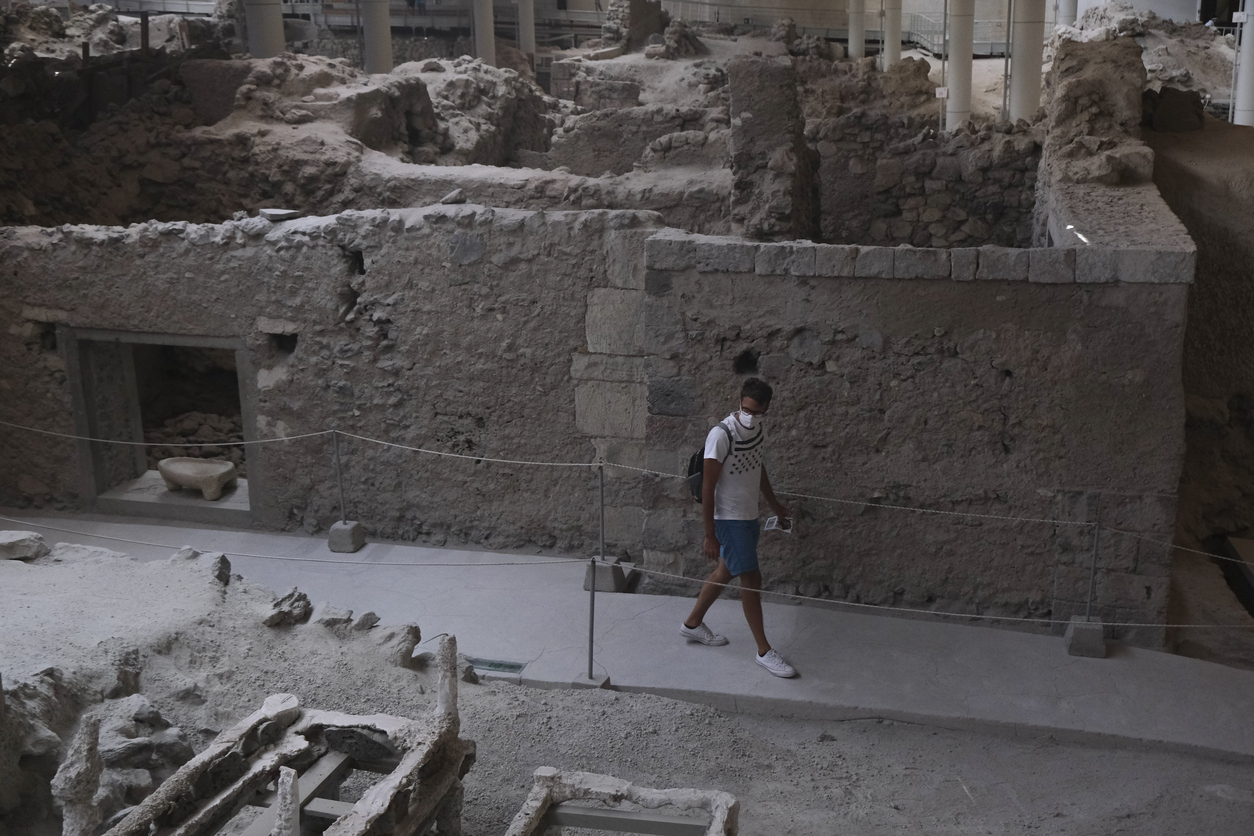Nicknamed Greece’s Pompeii, Akrotiri is the ruined city of Santorini. The main thing that Pompeii and Akrotiri have in common is that they were buried by volcanic eruptions which resulted in them both being perfectly preserved thereafter.
However, there are also some major differences between the two. As reported in On The Luce, Pompeii (an archaeological site in Southern Italy) was destroyed by a gigantic eruption from Mount Vesuvius in 79 AD and was completely covered over in volcanic debris.
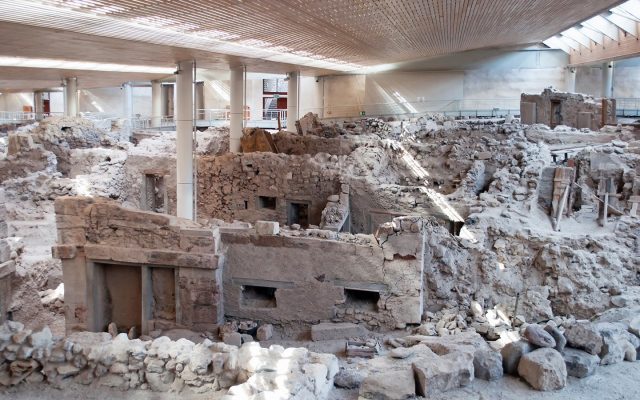
Akrotiri is much older than Pompeii and was destroyed by the Theran eruption in 1628 BC. The eruption completely destroyed the Minoan settlement (the Minoan civilization was a Bronze Age civilization on the Island of Crete and its surrounding Islands) and covered it in volcanic ash.
It has been described as the most destructive natural disaster to have ever been recorded.
It has been said that the people of Akrotiri were extremely advanced for their time. The buildings that people lived in were often up to three stories high.
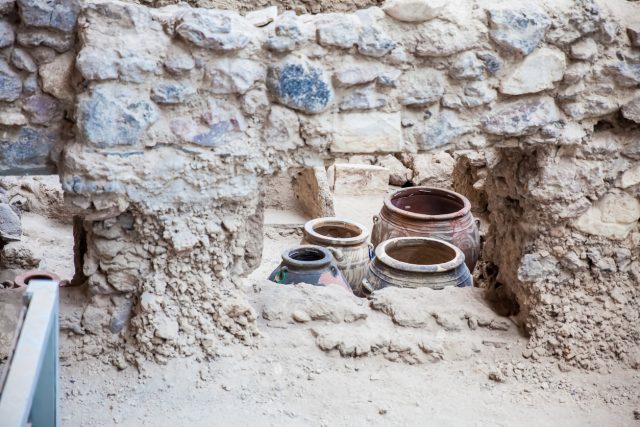
They also had toilets, baths, hot and cold running water, and an underfloor heating system. It was a highly evolved and incredibly cultured settlement. Akrotiri wasn’t always rich but it became a wealthy city over time due to being on a trade route that ran between Europe and Western Asia.
The people of Akrotiri were mainly known for their farming and fishing. The city had no palaces as there was no royalty, they were a democratic society governed by a parliament.
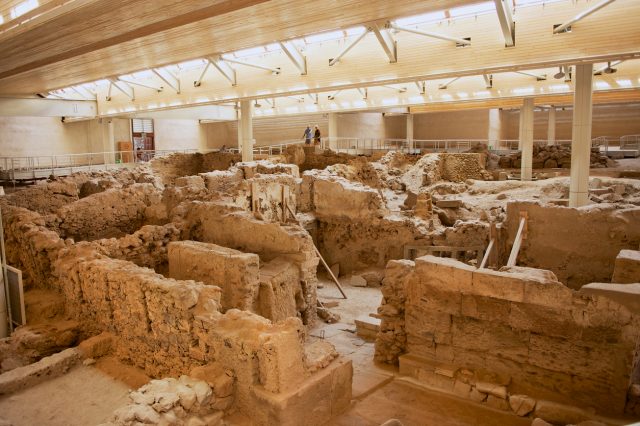
It is interesting that the Minoans were so advanced during the Bronze Age, painting beautiful frescoes, crafting pottery and making wine. Especially since the people of Britain at that same time were living in huts.
Scholars and historians have speculated that Akrotiri was Plato’s inspiration for the city of Atlantis. This is because Plato wrote about an Island that he described as ‘a great and wonderful empire’ which was suddenly destroyed by earthquakes and floods.
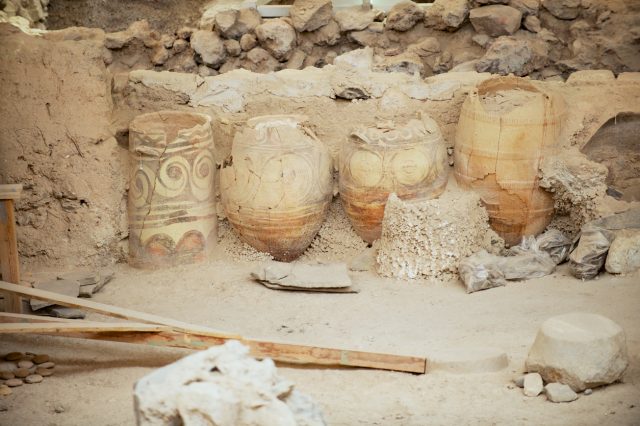
It has been said that Akrotiri could potentially have been named Atlantis originally. This is because the city was only named ‘Akrotiri’ in recent years after a neighbouring village of the same name.
The Theran eruption was so enormous it managed to create a caldera that was four miles wide. The ash cloud that resulted was over 20 miles high and the explosion encouraged a 100-metre tsunami.
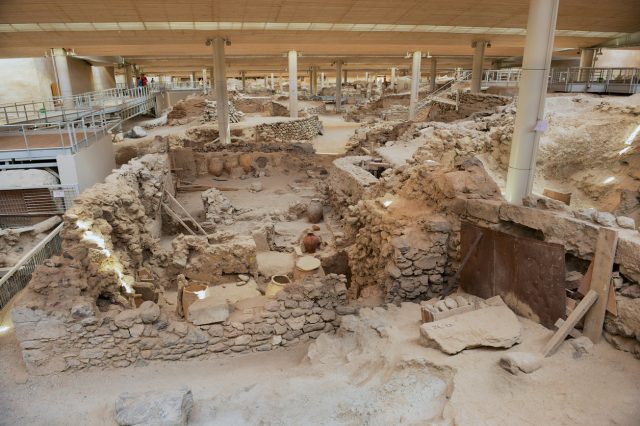
The entire area was covered in hot lava, ash, and debris. It is reported that no one went back to the island for centuries after the disaster.
This resulted in Akrotiri being forgotten about until the 1860’s when workers who were digging came across some buried artefacts. However, archaeological excavations didn’t take place until much later in 1967.
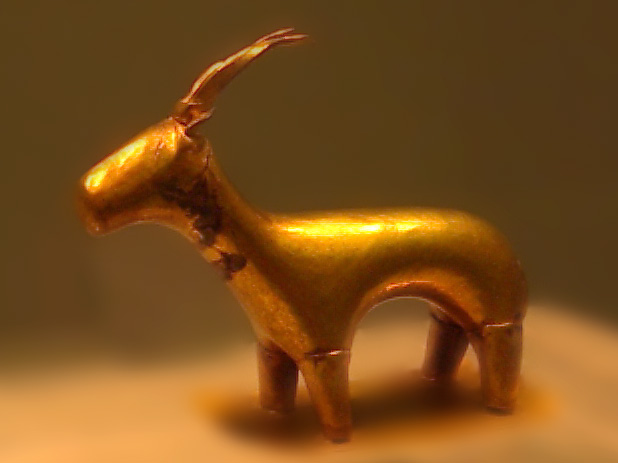
These excavations uncovered over 40 buildings from the ancient city of Akrotiri and there are still many more to be discovered. It is said that so far only a third of Akrotiri has been uncovered and it could take another 100 years to uncover the rest.
Visitors are welcome to go to the archaeological site and walk around on structures that have been built above the ruins. Some of the walkways lead down to the houses so that visitors can see what a Minoan home would have looked like.
The city has been completely preserved, but unlike Pompeii there are no remains of human beings. It seems all the people who lived there must have had time to evacuate before the damage was done, taking with them their livestock and precious belongings. The strange thing is that nobody ever returned to Akrotiri.
Another Article From Us: Is This the Childhood Home of Jesus Christ, Archaeologists Believe So
A lot of the furniture seen at the site has been recreated for the purpose of visitors since the actual artifacts have been moved to the National Archaeological Museum in Athens.
